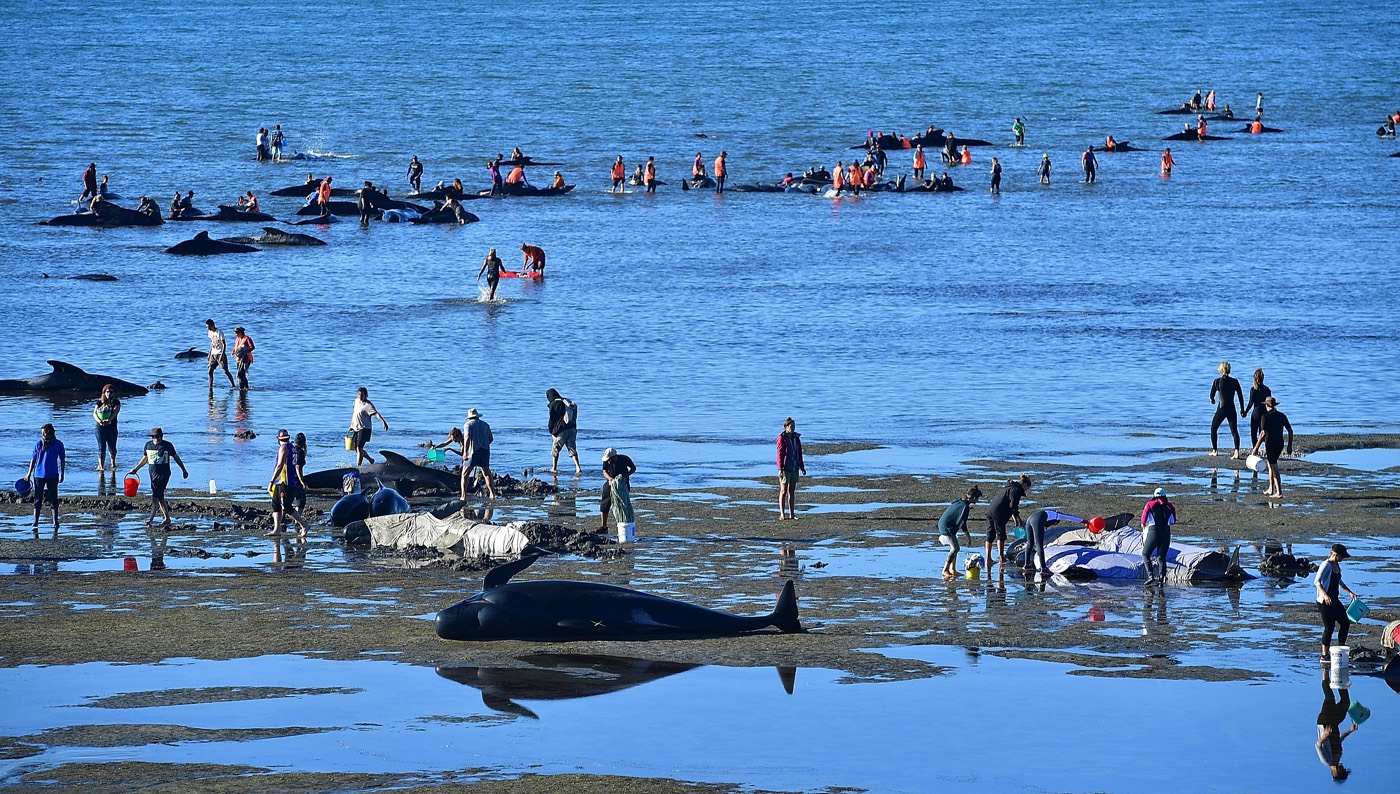Mystery of Whale and Dolphin Strandings May Hinge on NASA Data

Dolphins, whales and other cetaceans are found stranded along coasts worldwide, and now scientists are turning to NASA satellite data to figure out how the animals get off course.
The cause of the mass strandings remains a topic of debate. Coronal mass ejections, for example, occur when the sun launches a huge cloud of magnetized particles into space, disrupting Earth's magnetic field. A recent theory surrounding sea animal strandings suggests that geomagnetic changes caused by this type of solar storm could confuse the animals, which rely on the planet’s magnetic field for navigation.
To see if geomagnetic changes were in fact related to animal strandings, a team of researchers from the International Fund for Animal Welfare (IFAW) and NASA compared records of strandings in Cape Cod, Massachusetts, to changes observed in Earth's magnetic field. [See Photos of Whales and Sharks from Above]
Their findings show that coronal mass ejections alone aren't responsible for mass strandings. Instead, the energetic sun ejections may just be one of several factors that interfere with animals' internal compasses and lead them astray, according to a statement from NASA.
"Although our analyses indicated that geomagnetic storms are likely not a major cause, it is very difficult, if not impossible, to completely exclude any possible factor from the mix," Antti Pulkkinen, a space weather scientist from NASA's Goddard Space Flight Center in Greenbelt, Maryland, said in the statement."Our view is that strandings are likely caused by a complex combination of multiple environmental factors, so we want to include the widest possible range of possible parameters in the follow-up study."
In addition to Cape Cod, mass strandings are common along sloping beaches in New Zealand and Australia. All three of these coastal areas have fine-grained sediment, which is also believed to be one of the many factors responsible for animal strandings, researchers said.
Furthermore, in the event of a mass stranding, the researchers believe that the animals' strong social bonds cause otherwise healthy individuals to follow a distressed member of the pod into shallow waters, according to the statement.
Get the Space.com Newsletter
Breaking space news, the latest updates on rocket launches, skywatching events and more!
"If we can determine what conditions promote strandings and develop an alert system that recognizes when those factors are coming together, then stranding networks in different areas can prepare for the event and get rescue efforts on the ground sooner," Katie Moore, project collaborator and deputy vice president of Conservation and Animal Welfare at the IFAW, said in the statement.
Using data from NASA's Terra satellite, the Sea-viewing Wide Field-of-view Sensor (SeaWIFS), the Global Precipitation Measurement satellite and the National Oceanic and Atmospheric Administration's Geostationary Operational Environmental Satellite (GOES), the researchers began looking for other contributing factors that may affect the behavior of marine animals.
These factors include tidal patterns, winds and sea surface temperatures, which could disrupt the animals’ migration habits. Also, changes in ocean color — measurements of the ocean's chemical and particle content — could reflect changes in the food chain, the researchers said.
While strandings in different geographic areas require individualized study, the researchers said their findings have global implications and could one day be used to develop a predictive model to improve animal rescues, according to the statement.
In order to learn more about different stranding events that happen around the world, the researchers plan to develop an open-source tool for scientists to use to study strandings in their area, according to the statement.
"In past decades, we scientists often have worked in isolation, everyone sticking to their own specialty and answering questions from their perspective," Desray Reeb, a marine biologist at the Bureau of Ocean Energy Management, said in the NASA statement. "This exciting study brings amazing people with diverse expertise together to answer a question that has ramifications across the board."
Original article published on Live Science.
Join our Space Forums to keep talking space on the latest missions, night sky and more! And if you have a news tip, correction or comment, let us know at: community@space.com.

Samantha Mathewson joined Space.com as an intern in the summer of 2016. She received a B.A. in Journalism and Environmental Science at the University of New Haven, in Connecticut. Previously, her work has been published in Nature World News. When not writing or reading about science, Samantha enjoys traveling to new places and taking photos! You can follow her on Twitter @Sam_Ashley13.










